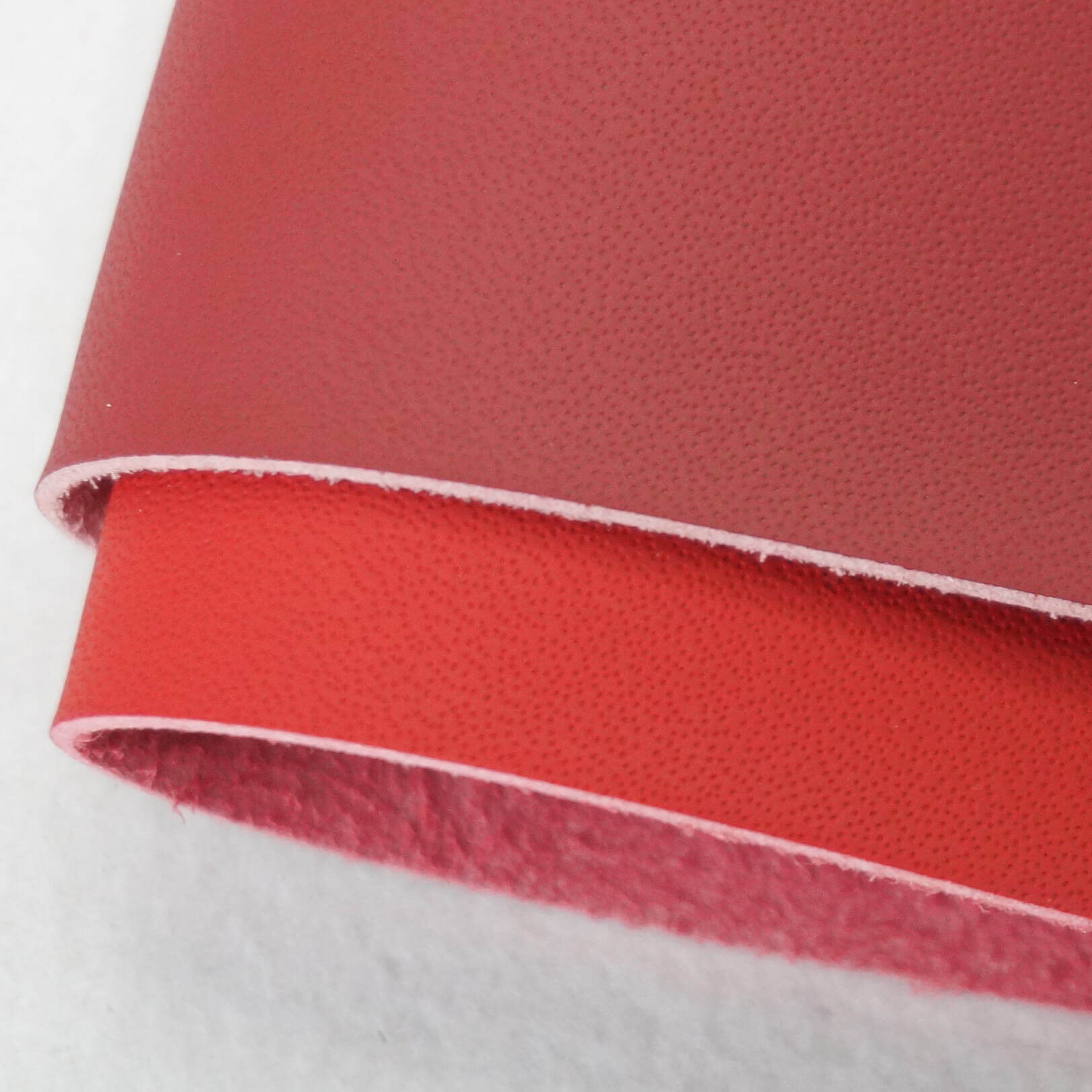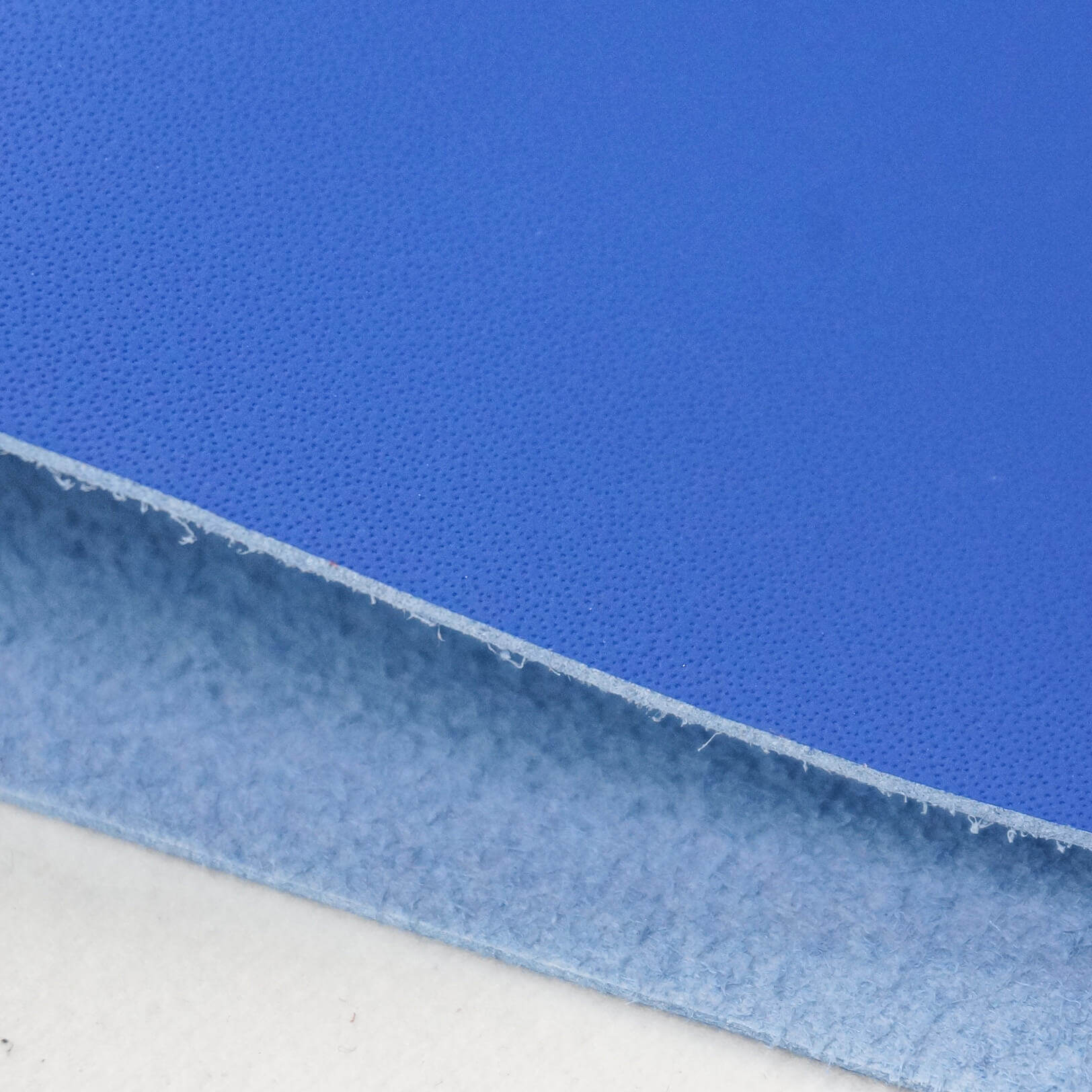Email format error
Email cannot be empty
Email already exists
6-20 characters(letters plus numbers only)
The password is inconsistent
Email format error
Email cannot be empty
Email does not exist
6-20 characters(letters plus numbers only)
The password is inconsistent

News

Microfiber Leather vs Cowhide Leather: An In-Depth Comparison for Consumers
In the world of upholstery and fashion, the debate between microfiber leather vs cowhide leather is one that captures the attention of designers, manufacturers, and consumers alike. Each material brings its unique set of characteristics to the table, influencing decisions on durability, aesthetics, cost, and environmental impact. In this comprehensive blog post, we will delve into the nuances of microfiber leather vs cowhide leather, helping you understand the pros and cons of each and why they matter in your purchasing decisions.
The Basics of Microfiber Leather vs Cowhide Leather
Understanding Microfiber Leather
Microfiber leather, also known as synthetic or faux leather, is a fabric made from a combination of microfiber non-woven fabric coated with a layer of high-performance polyurethane resins. This construction gives it a similar look and feel to genuine leather. It’s praised for its exceptional durability, water resistance, and ease of maintenance. Microfiber leather is also versatile, available in a variety of colors and textures, making it a popular choice in the automotive, fashion, and furniture industries.
The Traditional Appeal of Cowhide Leather
Cowhide leather is made from the natural hide of cows and is known for its rich texture, natural grain, and breathability. It has been used for centuries to produce a wide range of items, including clothing, accessories, and furniture. Cowhide leather is appreciated for its durability and the way it ages, often developing a patina over time that many consider adding to its aesthetic appeal.
Physical Properties Compared
Durability and Longevity
When it comes to durability, both microfiber leather and cowhide leather offer significant benefits. Microfiber leather is highly resistant to scratches and tears, making it a robust option for high-traffic environments. Its synthetic nature means it can withstand exposure to elements like sunlight and moisture better than traditional leather, leading to a longer lifespan under certain conditions.
Cowhide leather, on the other hand, is known for its natural strength and ability to age gracefully. It can last for decades if properly cared for, often developing a patina that adds character and beauty over time. However, it is more susceptible to scratches and requires more maintenance to preserve its natural qualities.
Texture and Comfort
The texture of microfiber leather is consistent and can be altered during manufacturing to suit different tastes and applications. It tends to be softer to the touch and more pliable, which can contribute to comfort, especially in upholstery.
Cowhide leather’s texture varies depending on the treatment and finish it undergoes. Full-grain leather retains the most natural feel, with visible grain patterns that many find appealing. It also breathes better than microfiber, which can add to comfort in clothing and seating.
Maintenance and Care
Microfiber leather is generally easier to care for than cowhide leather. It can be cleaned with a simple wipe-down using a damp cloth and mild detergent. It’s also less prone to staining and doesn’t require regular conditioning.
Cowhide leather needs more attention to maintain its appearance and feel. It should be regularly cleaned with products designed for leather care and conditioned to prevent drying and cracking. Spills must be addressed immediately to prevent permanent marks.
Aesthetic and Design Considerations
-
Microfiber leather offers a wide range of colors and finishes, as it can be easily dyed and treated to achieve the desired look. This makes it a versatile choice for designers looking to match specific color schemes or create unique pieces.
Cowhide leather also offers a variety of colors and finishes, though the options may be more limited compared to synthetic alternatives. The natural variations in the hide can add depth and richness to the color that is difficult to replicate in synthetic materials.
Styling Flexibility
The flexibility of microfiber leather in terms of styling is significant. It can be used in sleek, modern designs as well as in pieces that aim to replicate the look of traditional leather. Its uniformity allows for consistent results across different items.
Cowhide leather is often chosen for its classic and timeless appeal. It’s a staple in traditional and rustic designs but can also be incorporated into modern aesthetics when used thoughtfully.
Trends in Leather Use
Trends in leather use fluctuate with fashion and interior design cycles. Microfiber leather has been gaining popularity due to its sustainability and versatility, while cowhide leather remains a symbol of luxury and quality. Both materials are used in a variety of trends, from minimalist designs to more ornate and textured applications.
Economic Factors
Cost-Effectiveness
Microfiber leather typically offers a more cost-effective solution, especially for large-scale applications. Its manufacturing process is less resource-intensive, which is reflected in the final product’s price.
Cowhide leather is generally more expensive due to the costs associated with raising livestock, processing the hides, and the craftsmanship involved in creating finished products. The price can vary greatly depending on the quality and source of the leather.
Market Availability: Microfiber Leather for Sale
There is a growing market for microfiber leather, with many retailers and manufacturers offering it for sale. It’s becoming more accessible to both industry professionals and DIY enthusiasts, with competitive pricing and a variety of options.
Cowhide leather is widely available through specialty stores, tanneries, and online suppliers. While it may be more of an investment, its timeless quality and durability make it a worthwhile purchase for many consumers.
The Impact of Production Costs
The production costs of microfiber leather are generally lower, which can make it an attractive option for businesses looking to reduce expenses. The streamlined manufacturing process and lower material costs contribute to these savings.
The production of cowhide leather involves several stages, including tanning and finishing, which can be costly. These costs are often passed on to the consumer, making cowhide leather products a premium option.
Environmental and Ethical Implications
The Eco-Friendly Nature of Microfiber Leather
Microfiber leather is often touted as a more eco-friendly alternative to traditional leather. Its production generates fewer pollutants and uses less water and energy. Additionally, as it does not come from animals, it is a cruelty-free option that appeals to consumers with ethical concerns about animal welfare.
Ethical Concerns with Cowhide Leather
The production of cowhide leather raises ethical questions regarding animal welfare and the environmental impact of livestock farming. Tanning processes can also be harmful to the environment if not managed responsibly. However, there is a growing movement towards more ethical and sustainable practices in the leather industry, including the use of vegetable tanning and better management of resources.
Sustainability in the Leather Industry
Both microfiber and cowhide leather industries are working towards greater sustainability. Innovations in microfiber leather aim to improve recyclability and reduce the carbon footprint, while sustainable cowhide leather initiatives focus on ethical sourcing and environmentally friendly tanning methods.
Practical Applications
Use in Furniture Upholstery
Microfiber leather is widely used in furniture upholstery due to its durability and ease of maintenance. It’s an ideal choice for households with children or pets, as it can withstand spills and stains.
Cowhide leather is also a popular choice for upholstery, prized for its luxurious feel and the way it ages. It’s often used in high-end furniture that is designed to last for generations.
Fashion and Accessories
In the fashion industry, microfiber leather is used to create affordable, trendy items that are accessible to a wide range of consumers. It’s particularly popular in vegan and eco-conscious markets.
Cowhide leather remains a staple in the fashion world, especially for high-quality, classic pieces like jackets, boots, and handbags. Its durability and the way it molds to the wearer’s body over time make it a favorite for many.
Automotive and Aviation Interiors
Microfiber leather is commonly used in automotive and aviation interiors due to its resistance to wear and tear and its ability to withstand temperature changes. It provides a luxurious look and feel without the high cost of genuine leather.
Cowhide leather is also used in high-end automotive and aviation designs, where it’s valued for its premium appearance and comfort. It’s often found in luxury cars and private aircraft.
Consumer Perspectives
Popularity and Consumer Preferences
Microfiber leather has been gaining popularity as consumers become more aware of its benefits and as the quality continues to improve. It’s often preferred for its affordability and ethical considerations.
Cowhide leather has a long-standing reputation for quality and luxury. Many consumers prefer it for its natural characteristics and the prestige associated with genuine leather products.
Reviews and Testimonials
Online reviews and testimonials can provide insight into the real-world performance of microfiber leather vs cowhide leather products. Positive experiences with the durability and maintenance of microfiber leather can influence potential buyers, while the classic appeal and longevity of cowhide leather continue to attract loyal customers.
The Influence of Branding
Branding plays a significant role in consumer preferences. Brands that are known for their quality and craftsmanship can sway customers towards cowhide leather, while those that promote sustainability and innovation may drive interest in microfiber leather.
Industry Insights
The Role of Microfiber Leather Suppliers
Microfiber leather suppliers are crucial in the industry, providing a range of products to meet the diverse needs of customers. They often work closely with manufacturers to develop new types of microfiber leather fabric that can mimic the look and feel of cowhide leather even more closely or offer unique properties for specific applications.
Innovations in Cowhide Leather Processing
Despite the rise of synthetic alternatives, the cowhide leather industry continues to innovate. Tanneries are constantly seeking ways to improve the quality and sustainability of their products, from reducing water and chemical use to adopting more humane animal husbandry practices.
Future Trends in Leather Manufacturing
The future of leather manufacturing is likely to be shaped by advancements in both microfiber and cowhide leather production. As consumers become more environmentally conscious and demand higher ethical standards, the industry is expected to respond with materials that are not only high quality but also sustainable and ethically sourced.
Care and Maintenance
Cleaning Tips for Microfiber Leather
To maintain the appearance of microfiber leather, regular cleaning is essential. Use a soft brush or vacuum with a brush attachment to remove dust and debris. For light stains, a damp cloth with a small amount of mild detergent can be used, followed by a dry cloth to remove any moisture.
Preserving the Quality of Cowhide Leather
Cowhide leather needs more attention to maintain its appearance and feel. It should be regularly cleaned with products designed for leather care and conditioned to prevent drying and cracking. Spills must be addressed immediately to prevent permanent marks.
Repair and Restoration Techniques
Both microfiber and cowhide leather can be repaired and restored to some extent. Microfiber leather may require patching or a specialized filler to address tears, while cowhide leather can often be reconditioned and buffed to remove scratches and restore its natural luster.
Purchasing Guide
Finding Quality Microfiber Leather Fabric
When searching for microfiber leather fabric, it’s important to consider the weight, texture, and intended use. Reputable suppliers will provide detailed information about their products, allowing you to make an informed decision.
Selecting Premium Cowhide Leather
For cowhide leather, look for indicators of quality such as the grain, tanning process, and finish. Premium leather should feel supple and have a consistent color and texture.
Tips for Identifying Genuine Materials
To ensure you’re purchasing genuine materials, familiarize yourself with the characteristics of both microfiber and cowhide leather. Check for certifications, ask for samples, and buy from trusted sources.
DIY and Crafting with Leather
Leather crafting is a time-honored tradition that combines artistry with practical skill. Whether you’re working with microfiber leather or cowhide leather, the possibilities for DIY projects are nearly endless. From creating custom wallets and handbags to upholstering furniture, leather can add a touch of elegance and durability to a variety of crafts.
Home Projects Using Microfiber Leather
Microfiber leather is an excellent choice for home DIY projects due to its ease of use and maintenance. It’s a forgiving material that can be cut, glued, and sewn with standard crafting tools. Some popular home projects include making leather coasters, upholstering headboards, or crafting unique throw pillows. Microfiber leather’s resistance to stains and spills also makes it ideal for dining chair seats or other furniture pieces that require durability.
Crafting with Cowhide Leather
Cowhide leather is a traditional material that’s revered for its rich texture and natural grain. Crafting with cowhide leather can be a rewarding experience, as it often involves techniques like tooling, dyeing, and stitching that have been used for generations. Cowhide is perfect for making belts, leather journals, or custom footwear. While it requires more specialized tools and techniques than microfiber leather, the results can be stunning and heirloom-worthy.
Tools and Techniques for Working with Leather
Working with leather, whether microfiber or cowhide, requires a set of specialized tools and techniques. For cutting, a sharp utility knife or rotary cutter is essential. Punching holes for stitching can be done with an awl or leather punch, while sewing requires needles designed specifically for leatherwork. When working with cowhide leather, additional tools like edge bevelers, burnishers, and stamping tools can be used to add decorative touches.
Conclusion: Making an Informed Choice Between Microfiber Leather vs Cowhide Leather
In conclusion, both microfiber leather and cowhide leather have their place in the world of DIY and crafting. Your choice between the two will depend on the specific requirements of your project, your budget, and your personal preference. Microfiber leather offers a more uniform appearance and is easier to maintain, making it suitable for projects that require a modern look and minimal upkeep. Cowhide leather, on the other hand, provides a traditional aesthetic and can develop a unique patina over time, ideal for projects that aim for a classic or rustic feel.
FAQs About Microfiber Leather vs Cowhide Leather
Q1: Is microfiber leather as durable as cowhide leather?
A: Microfiber leather is designed to be highly durable and is often comparable to cowhide leather in terms of wear and tear resistance.
Q2: Can I use the same tools for microfiber leather that I use for cowhide leather?
A: Many of the tools used for cowhide leather crafting can also be used for microfiber leather, although microfiber may not require as many specialized tools due to its synthetic nature.
Q3: How do I care for and maintain my leather crafts?
A: For microfiber leather, wiping with a damp cloth is usually sufficient for cleaning. Cowhide leather may require conditioners or specific leather cleaners to maintain its appearance and flexibility.
Q4: Is microfiber leather more environmentally friendly than cowhide leather?
A: Microfiber leather is often touted as a more eco-friendly option because it doesn’t involve animal products and typically has a more efficient manufacturing process. However, the environmental impact also depends on the production methods and materials used.
Q5: Can I achieve the same finishes with microfiber leather as with cowhide leather?
A: Microfiber leather comes in a variety of finishes and can mimic the look of cowhide leather quite closely. However, the natural grain and potential for patina with cowhide leather are unique characteristics that synthetic materials cannot fully replicate.

